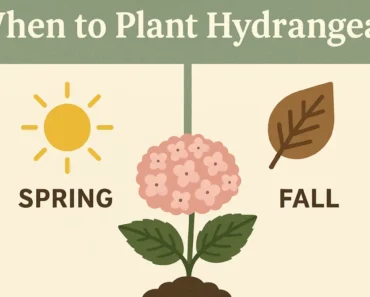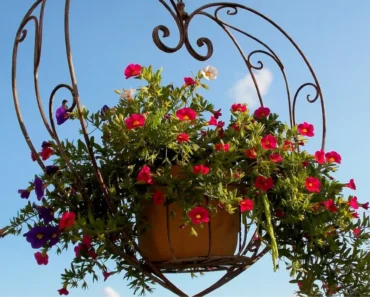Are you planning a new garden or looking to optimize your planting layout? Our Plant Spacing Calculator makes it easy to calculate how many plants you’ll need for your garden, based on the available space, desired plant spacing, and estimated plant costs.
This user-friendly tool helps you:
Optimize your garden layout by determining the best spacing for each plant.
Calculate the number of plants needed for any garden area.
Estimate the total cost for planting based on your chosen plant price.
Plant Spacing Calculator
Table of Contents

Gardening All Year Round
Gardening isn’t just a seasonal activity; with careful planning, you can garden all year round! Whether you’re growing vegetables, herbs, or flowers, understanding plant spacing is key to maintaining healthy growth and optimizing available space. Using the Plant Spacing Calculator is an easy and effective way to make sure you’re planting in a way that works with the seasons and your available space. By inputting the dimensions of your garden and your desired plant spacing, the calculator helps you determine the exact number of plants needed for each season, so you can grow your favorite plants year-round.
Square vs. Rows vs. Triangular Spacing
When planting in your garden, you can choose from several types of plant spacing. Each method offers different benefits depending on the plant type and the space available:
Square Spacing:
Square spacing involves planting your crops in evenly spaced rows and columns, creating a grid-like pattern. This method is commonly used for crops like beans and leafy greens. It ensures equal access to sunlight, water, and air, and is ideal for small gardens.
Rows Spacing:
Row planting is typically used for larger plants or crops that require ample space to grow, like tomatoes, peppers, and cucumbers. The plants are arranged in long, straight rows with a specified distance between them. This method makes it easier to navigate through your garden for tasks like weeding or harvesting.
Triangular Spacing:
Triangular spacing arranges plants in a way that maximizes space usage by placing each plant in the gaps between others, forming a triangular pattern. This method is commonly used for plants like carrots or lettuce, and it can lead to a higher plant density, making the most of the available space.
Fun Fact: Triangular spacing is considered the most efficient way to plant because it maximizes the area for each plant, allowing them to grow more freely with minimal competition for resources.
Hedge Spacing – Hedgerows
Hedges and hedgerows are an excellent way to create boundaries or privacy screens in your garden. When planting hedges, spacing is crucial to ensure healthy, dense growth. Generally, hedgerow plants should be spaced about 18 to 24 inches apart, depending on the species and how wide they grow. The Plant Spacing Calculator can help you determine the exact number of plants you need to create a seamless and lush hedgerow without overcrowding.
How to Use the Plant Calculator
Using the Plant Spacing Calculator is simple. All you need to do is:
- Enter the dimensions of your garden or planting area (length and width).
- Specify the spacing between your plants (in centimeters or inches).
- Input the cost per plant (optional, if you’d like to estimate total plant costs).
- Hit Calculate, and the tool will provide you with:
- The total number of plants needed for your area.
- The estimated cost for purchasing those plants (if you included plant cost).
- A visual progress indicator showing your progress.
The calculator can handle different types of spacing and planting configurations, from square and row planting to more complex triangular planting arrangements.
What is the Formula for Plant Density? How to Calculate Plant Spacing
Plant density refers to how closely plants are arranged in a given area, and it is an essential factor in determining the optimal spacing for healthy plant growth.
Formula for Plant Density:
To calculate the plant density in your garden, you can use the following formula: Plant Density=Garden AreaArea per Plant\text{Plant Density} = \frac{\text{Garden Area}}{\text{Area per Plant}}Plant Density=Area per PlantGarden Area
Where:
- Garden Area is the total area of your garden (in square meters or feet).
- Area per Plant is the amount of space each plant requires (based on the spacing you choose).
For example, if your garden is 10m², and each plant needs 0.5m² to grow, the plant density would be 20 plants.
How to Calculate Plant Spacing:
To determine the optimal spacing between your plants, you should consider the following:
- The mature size of the plant.
- The amount of sunlight, water, and nutrients the plant requires.
- The plant’s growth habits, such as whether it’s bushy, sprawling, or tall.
The Plant Spacing Calculator automatically helps you figure out the best spacing for your specific plants, based on the input you provide.
A Fun Fact About Triangular Spacing
Did you know that triangular spacing allows you to plant up to 15% more plants in the same area compared to traditional row planting? The triangular arrangement helps to make use of otherwise wasted space, improving plant density without overcrowding.
Triangular spacing works especially well for root crops like carrots, onions, and beets, as well as certain flowering plants and herbs. It’s a perfect option for maximizing space in small gardens.
FAQs
1. Why should I calculate plant spacing?
Plant spacing ensures that each plant has enough space to grow properly, maximizing sunlight exposure, water absorption, and air circulation. It prevents overcrowding, which can stunt plant growth or lead to diseases.
2. How do I know the best spacing for my plants?
The best spacing depends on the type of plant you are growing. Check seed packets or plant care guides for recommended spacing, or use our Plant Spacing Calculator for quick calculations.
3. Can I use the calculator for different types of plants?
Yes! The Plant Spacing Calculator works for various plant types, including vegetables, flowers, herbs, and shrubs. You can adjust the spacing based on the plant’s growth habits.
4. Does the calculator work for both large and small gardens?
Absolutely! Whether you have a small backyard or a large garden, the calculator will help you determine the exact number of plants needed and the appropriate spacing.
5. What if I want to plant a hedge or hedgerow?
The Plant Spacing Calculator can also help with hedgerow planning. Simply enter the plant spacing for the type of hedge you’re planting, and the calculator will provide you with the correct number of plants for your desired spacing.
Conclusion
The Plant Spacing Calculator is an indispensable tool for anyone serious about garden planning. By helping you accurately calculate the number of plants, their spacing, and the associated costs, this tool simplifies the gardening process, ensuring that your plants have the space they need to thrive. Whether you’re planting a vegetable garden, creating a flower bed, or establishing a hedgerow, the Plant Spacing Calculator helps you make the most out of your garden space.
Start using the calculator today and take the first step toward a more organized and cost-effective garden!
Author
George Wine is a seasoned gardening expert with over 20 years of experience in the field of horticulture. His passion for plants and nature has driven his career, where he has honed his skills in various aspects of gardening, from landscape design to plant care. George holds a Master of Science in Horticulture from the University of California, Davis (UC Davis), a prestigious institution known for its research and advancements in plant science.
Throughout his career, George has worked with a diverse range of clients, offering tailored solutions to enhance outdoor spaces and create thriving gardens. His knowledge and expertise allow him to provide invaluable advice, ensuring that both novice and experienced gardeners achieve their gardening goals. Whether you’re looking for tips on sustainable gardening practices, innovative design ideas, or advice on specific plant species, George is here to help you cultivate the garden of your dreams.




